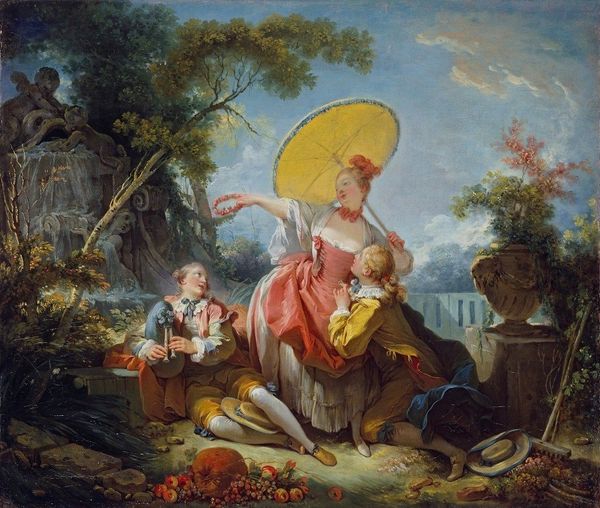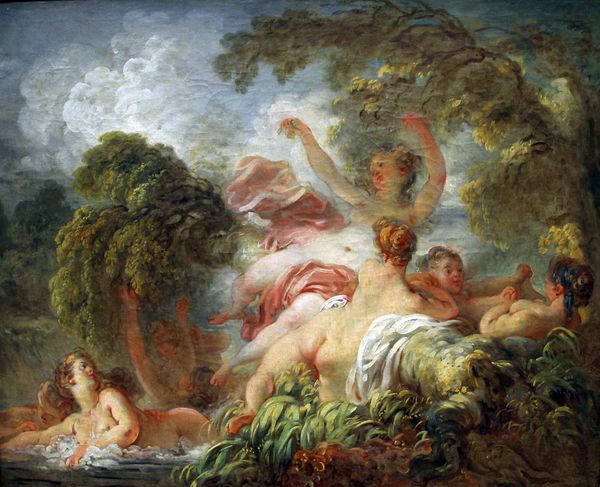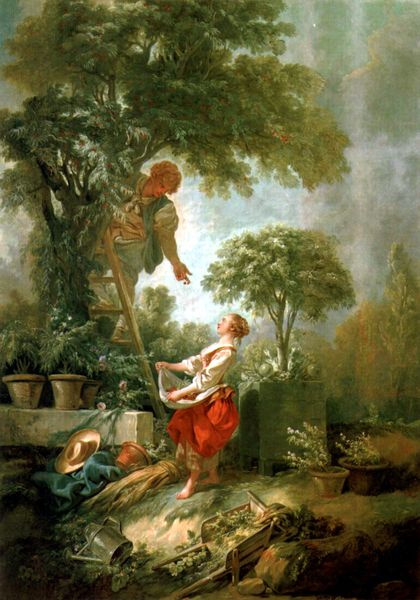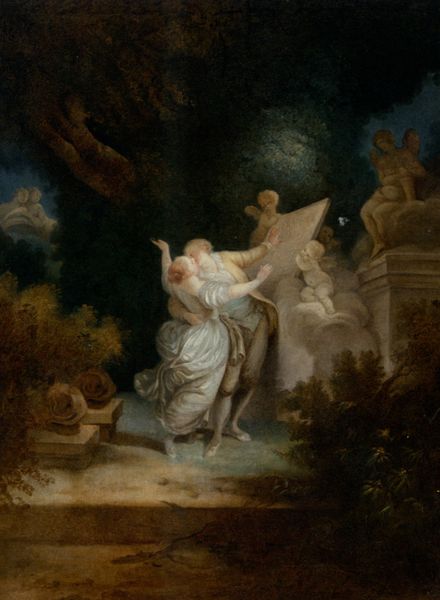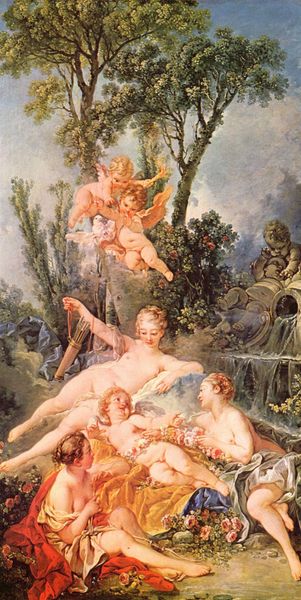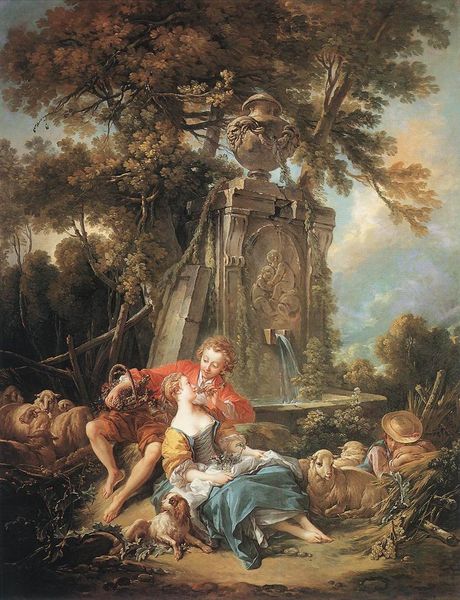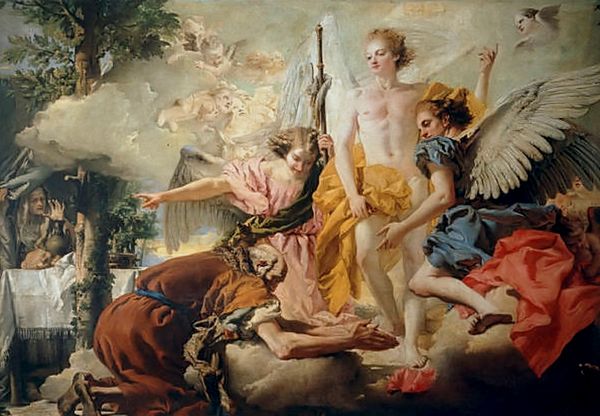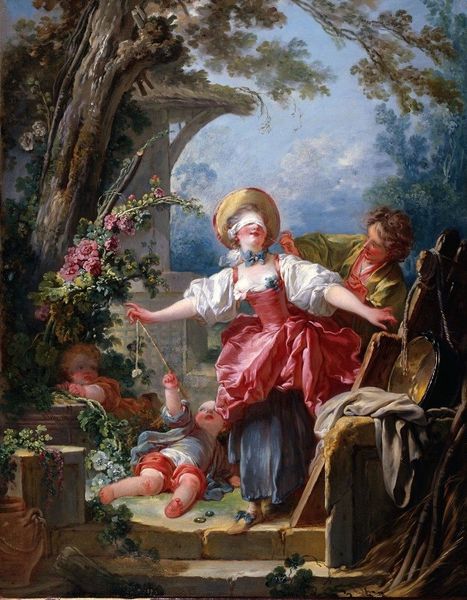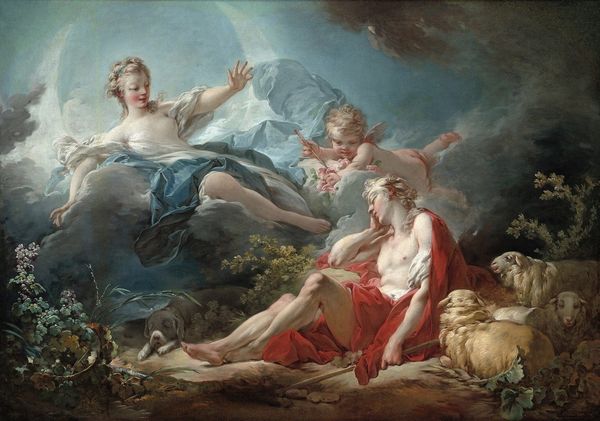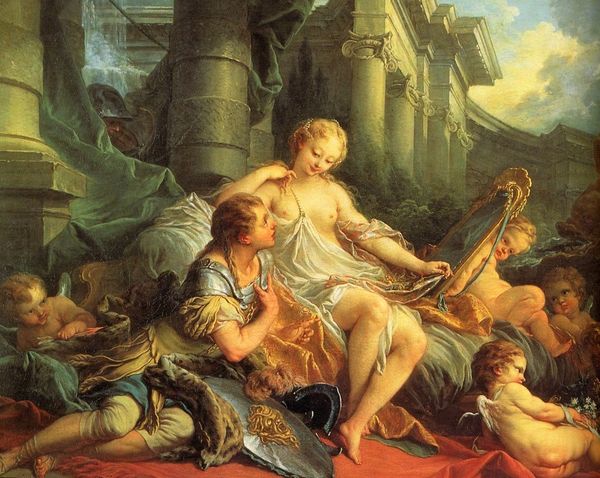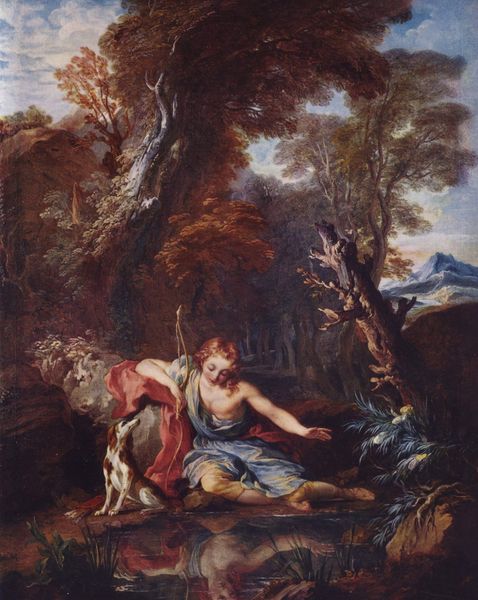
#
abstract painting
#
impressionist painting style
#
impressionist landscape
#
possibly oil pastel
#
oil painting
#
fluid art
#
neo expressionist
#
acrylic on canvas
#
mythology
#
painting painterly
#
expressionist
Dimensions: 118 x 161 cm
Copyright: Public domain
Curator: "The Shepherdess," painted by Jean-Honoré Fragonard in 1752, presents us with an idyllic pastoral scene. The canvas breathes the soft air of Rococo sentimentality. Editor: It strikes me as profoundly artificial. The pastels, the elaborate dress, the suspiciously clean sheep. Is this really about shepherdry, or something else entirely? Curator: Precisely! It’s not about accurate depiction but idealized representation. Consider the careful arrangement of color: the counterpoint between the soft blues of the sky and dress, balanced against the warmer yellows and pinks. Every element leads the eye to the central figure. Editor: An interesting figure indeed! The painting presents a tension between simplicity and elaborate display. While portraying a shepherdess, she wears a rather intricate gown. It feels more like a staged tableau than a glimpse into actual rural life. This was commissioned, yes? Curator: Likely. The subject serves as a metaphor, echoing the aristocratic longing for an unspoiled nature, even while actively shaping that landscape. Also, notice the garland. Floral wreaths serve as signs of courtly love, which contrast with any real-world context to a herder's life. Editor: So it's a constructed image of innocence and leisure, reflective of a privileged class fantasizing about the simple life. A carefully orchestrated piece of propaganda almost. It seems to glorify rural life while actively distorting its realities. Curator: To reduce it merely to propaganda misses the artistry in play here. Fragonard manipulates the very notions of artificiality and artifice to heighten aesthetic enjoyment. The painting itself becomes an emblem of an entire era, not merely a historical document, but a symbolic arrangement of shape, line and hue. Editor: Fair enough. Viewing art always demands looking past just technique, though, to find connections within broader societal dynamics. Together, considering the form, historical, and social forces shapes a complete understanding. Curator: Yes, indeed. Each interpretation offers valid access points. It underscores how understanding evolves through diverse analysis.
Comments
No comments
Be the first to comment and join the conversation on the ultimate creative platform.
